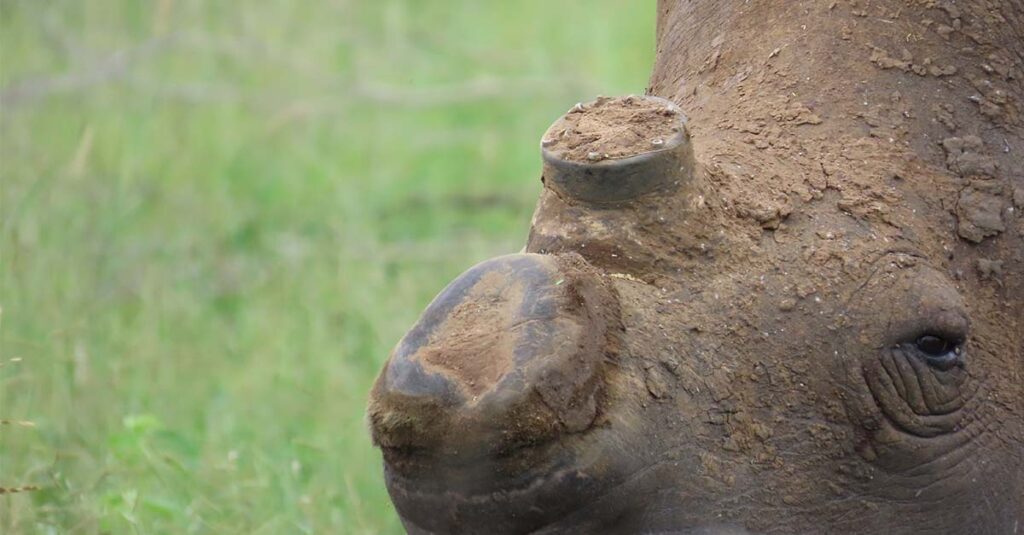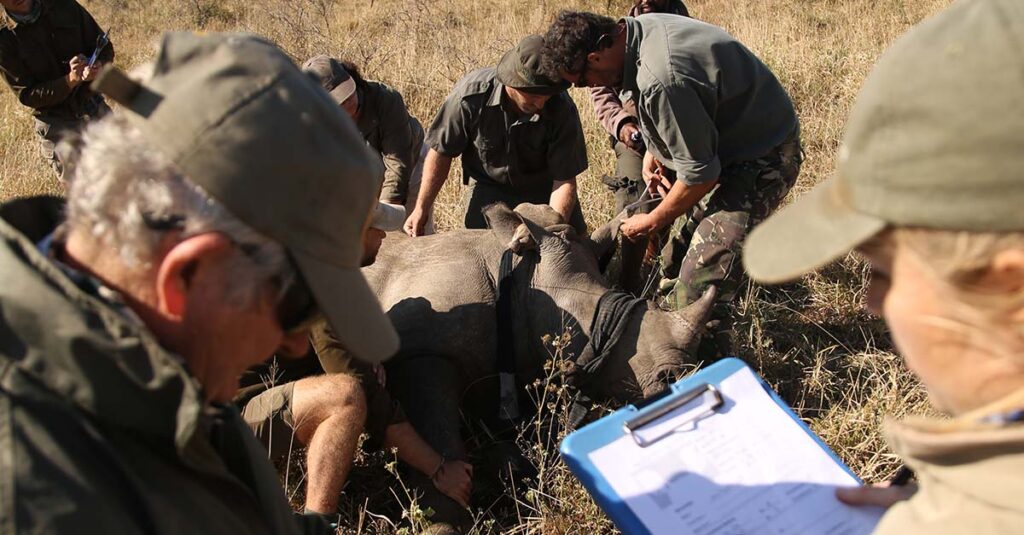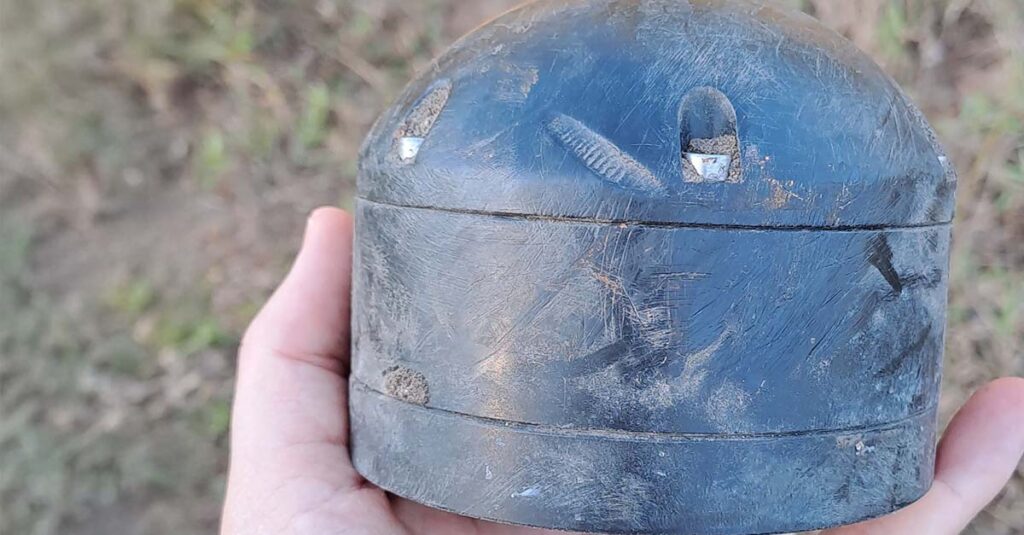Better rhino monitoring through GPS pods

Editorial Note: Undertaking both applied and basic research on wild rhino populations, as well as those in captive breeding programs, is an essential aspect of rhino conservation. The International Rhino Foundation (IRF) is the only organization to provide funding strictly for rhino research. IRF distributed nearly $300,000 in funding to nine worthy rhino studies in 2023.
IRF’s grants target key areas that address some of the greatest challenges to conserving rhinos and maintaining healthy, self-sustaining populations that will survive well into the future. Below is a blog written by one of IRF’s grantees, the Munywana Conservancy, summarizing their research to help improve designs and attaching techniques of tracking devices for dehorned rhinos.
Managing priority species like rhinos requires intense daily monitoring and security. Ankle collars, ear tags and horn implants have traditionally been used to track and monitor individuals and populations.
Unfortunately, ear tags have been known to tear off easily, and ankle collars sometimes cause issues as well. Horn implants have had the greatest success, yet are limited to animals with horns large enough to accommodate transmitters. Since the recent rhino-poaching onslaught began, many rhino reserves maintain their populations dehorned, ruling out the use of horn implants.
Considering the challenges involved in effectively monitoring rhino activity, we undertook a study to help improve designs and attaching techniques of tracking devices for dehorned rhinos. Based on previous development and trials, this project proposed gluing a resistant pod containing a LoRa or Astrocast GPS tracking device to the posterior horn stumps of white and black rhinos at the Munywana Conservancy in South Africa.

This project has led to further developing and trialling of a tracking device suitable for dehorned rhino. Within the Munywana Conservancy, a total of 34 pods—25 LoRa and nine Astrocast—were deployed on either black or white rhinos of different sex and age. Because of the imbalance in sample size due to delays around Astrocast pod production and the planned dehorning operations in Munywana, the comparison in terms of functionality between LoRa and Astrocast devices was made based on all podding sites, including Hluhluwe-iMfolozi Park, Kruger National Park and Ithala Game Reserve.
LoRa pods proved to be more reliable and lasted longer than Astropods and have the best results with good quality LoRa networks. With the current number of Astrocast satellites in the sky, Astropods are not yet fully reliable and require being set to a lower fix rate and deployed with caution to not cause overload. These devices remain a good option for areas with no network and smaller sample sizes and bare data costs lower than conventional satellite-based devices.
Generally, with the current size and build of the devices, average lifespan was five to seven months, but on cows or smaller horned animals can be much longer, from 12 to 16 months. Particular attention must be paid to fitting the devices to rhinos to ensure maximum longevity. Attachment should be further adapted, especially for large white rhino to reach a 100 percent attachment success rate, as currently the increased horn base size and infighting between dominant bulls may be the root cause for detachment.

Battery lifespan is not a concern, which for LoRa is more than two years, as horn regrowth will cause detachment prior to batteries being depleted. At this stage, VHF capabilities are insufficient but useful for pod recovery.
Pods cannot cause injury and do not require retrieval as they eventually fall off with horn regrowth. The pods allow an easy battery change and can be refurbished at no extra cost.
These devices offer a viable solution to remotely tracking rhinos medium-term at no risk of injury to the animal and should be considered as an option in the array of tracking devices for rhino to monitor movements and gather data, and for further development.
These pods are particularly useful for species that have an elusive nature and are highly vulnerable to poaching, like rhinos. The horn pods provide rhino rangers and conservationists with the rhinos’ locations approximately every hour, offering critical data on where rhinos spend their time, whether they leave the boundaries of the park or reserve, whether they stop moving altogether—a potential sign of duress or a poaching event—their home ranges, general habitat use and the interactions between individual rhinos and between different rhino species.

The next steps for the development of the pods are to further trial enhanced very high frequency, known as VHF, capabilities in LoRa pods; deploy and trial Sigfox pods, another type of GPS tracker, and work to stabilize Astropods through another project based in Kruger; outsource a local manufacturer to bring the price of the devices down to make them more accessible; and put together a standard operating procedure for pod deployments, recovery and refurbishment.
Finally, we would like to set up an emergency pod bank which will consist of having pods and gluing supplies on hand for emergency translocations, captures or post-treatment monitoring for rhino in KwaZulu-Natal and beyond.
This project has led to full cooperation and collaboration among the Munywana Conservancy, the University of Neuchâtel in Switzerland and the School of Engineering and Management Vaud (HEIG-VD), also in Switzerland. The Munywana Conservancy spear-headed field operations for pod deployments and post monitoring, the University of Neuchâtel handled coordination, pod deployment and data analyses and the HEIG-VD worked on the development and production of pods. This work would not have been possible without the generous support from the International Rhino Foundation.
